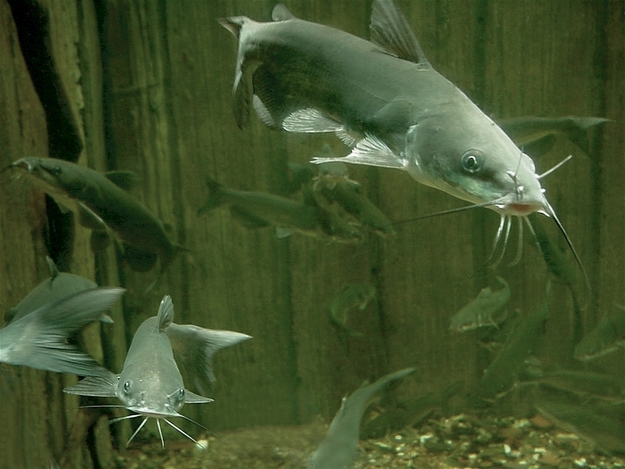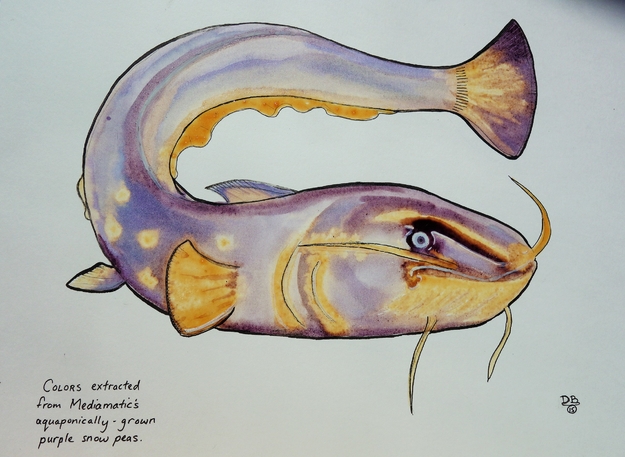Marine fish (Euryhaline) on the other hand lose a lot of water through their skin, as the salt balance in the surrounding water is higher. To balance this out they drink a lot of seawater, but both mechanisms increase the salt build-up. To balance this, marine fishes' kidneys will produce highly concentrated urine for excretion. Also, the same chloride cells in the gills work in reverse and additionally remove salt from the organism. (Zadunaisky, 1996)
Some species are able to adjust to alternating salinity levels. Examples for this are tilapia and salmon. Later inhabit both ecosystems in a lifetime. (Edwards and Marshall, 2012) When they reach the sea, they start drinking a lot of water, but to retain the water, their kidneys lower the urine production. Lasty the chloride gill cells will pump ions out instead of in. When returning into their spawn place, the mentioned processes change back. (Tipsmark et al., 2010)
Species that live in estuaries, where freshwater and seawater meet, have a unique osmoregulatory process. They convert ammonia to urea, retain it in their blood to prevent loss of water via osmosis, and excrete excess salt through the rectal gland. The process is regulated by hormones, cortisol, and thyroid hormone, in the brain and influences the rate and direction of ions pumped through chloride cells. (Houdry, 1995)
In a study on the toxicity of NaCl on African catfish fries no survival of the young fry at Concentrations of 10 g/L NaCl was recorded. (Magondu et al., 2011) In another study it was found that the rate of cannibalism among African catfish in larvae stages is lower with salinities between 4-6 ppt. (Kawamura et al., 2017) Another study investigated ways to control pathogens in an African catfish culture. They suggest that young fingerlings can be transferred into brackish water with salinity values of 6.0 ppt to control pathogenic infections for a short period of time. (Fashina-Bombata and Busari, 2003) Studies suggest that long term elevated salinity levels affect vital metabolisms in the fish and can lead to alterations in liver functioning. They suggest long term exposure to salinity levels up to 2.5 ppt severely trigger stress responses in the fish. (Akinrotimi, 2019)
Since the salinity will be affected by the canal water, the recommendation for a NaCl limit is derived from the canal water lab tests. Based on the analysis of three nutrient samples from the canal water, it has been determined that the average sodium chloride (NaCl) content of the canal's total salinity is approximately 60.83% to 60%. When referring to the 2019 study, a non-stress-inducing limit for catfish in terms of NaCl concentration would be 1.5 ppt or 1500 ppm, which is 60% of 2.5 ppt salinity. Higher levels can risk the welfare of the fish population.
It must be respected that the Catfish of the aquaponic system is a freshwater fish (Stenohaline) that can withstand lower levels of salinity. Subjecting the Catfish to high levels of salinity for an extended period can result in fatal dehydration. For a establishing a marine aquaponic operation, more research can be conducted regarding the use of more salt-tolerant species, such as Tilapia or marine-shrimp.

